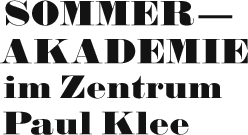Sommerakademie 2008
dragged down into lowercase
August 05-13, 2008
“I used to see a large box by the railroad, six feet long by three wide, in which the laborers locked up their tools at night, and it suggested to me that every man who was hard pushed might get such a one for a dollar, and, having bored a few auger holes in it, to admit the air at least, get into it when it rained and at night, and hook down the lid, and so have freedom in his love, and in his soul be free.”
(Walden, H.D. Thoreau, 1854)
Henry David Thoreau, who was a staunch critic of all but the most spartan of architecture, famously lived in a house he described as “a porch at the entrance to a burrow”. Throughout Walden, Thoreau refers to minimal, often subterranean structures, evoking a compulsion to return architecture to the earth, towards death or, as he put it, to an “architecture of the grave”. Thoreau's understanding of architecture and modes of habitation at their bare minimum is compelling not only for his impassioned commitment to self-deprivation, but also for his belief that it is solely in the most reduced circumstances that we may find release from the world around us. In writing Walden, Thoreau was effectively writing an existence for himself and performing this as life.
Questioning the relationship between production, visibility, survival, and extinction, the activity of this year's Sommerakademie will focus on complex works that choose to abstain from a single identity or assessment of value. Clémentine Deliss and Oscar Tuazon have devised a conceptual and physical setting inspired by Thoreau's empirical understanding of philosophy: the exhibition will be held under the earth, in an excavated structure designed by Tuazon. Furthermore, participants in this year's Sommerakademie will be invited to live for the duration of the session on the site of the exhibition. Treating the parklands of the Zentrum Paul Klee simultaneously as an exhibition space and as a place to live, dragged down into lowercase encourages a multiple, dialectical relation to the garden.
dragged down into lowercase inverts the classical conception of a contemplative subject posited by garden design and landscape painting: there are no views, nothing is framed in sequence against the horizon. Here the architectural folly is the underground. Exposing the earth, the exhibit evokes the functions and mythologies of burrows, basements, bunkers, caves, tombs, archaeological digs, illegal dumps, landmines, and craters. This lowercase condition of existence emphasizes a fractured experience of landscape more in line with formulations of Land Art, which vacillated between aerial perspectives, on the ground experience, and written description.
Seminars and workshops will aim to elicit a variety of innovative performative, theoretical and practical responses to the polyvalent social and phenomenological implications of the “underground". In tandem with the discursive element of the Sommerakademie, the physical conditions are considered to be a central element of this year's project. Participating artists are required to accept two key conditions: Firstly, that all art works will be staged outdoors, and most probably under the earth. Works should be designed to withstand normal weather conditions. Secondly, that accommodation for participants of the Sommerakademie will be located within the parameters of the Paul Klee Zentrum, in a barn or temporary structure specially converted for the purpose.
Faculty Chair:
Dr. Clémentine Deliss (curator, publisher) Oscar Tuazon (artist)
Faculty:
Christoph Büchel (artist) Dr. Adrian Piper (artist, philosopher)
Giovanni Carmine (curator) Joe Scanlan (artist)
Dr. Martin Kimani (war and security analyst)
(Title of Sommerakademie taken from Elliot Smith, ‘fear city’, New Moon, 2007)





